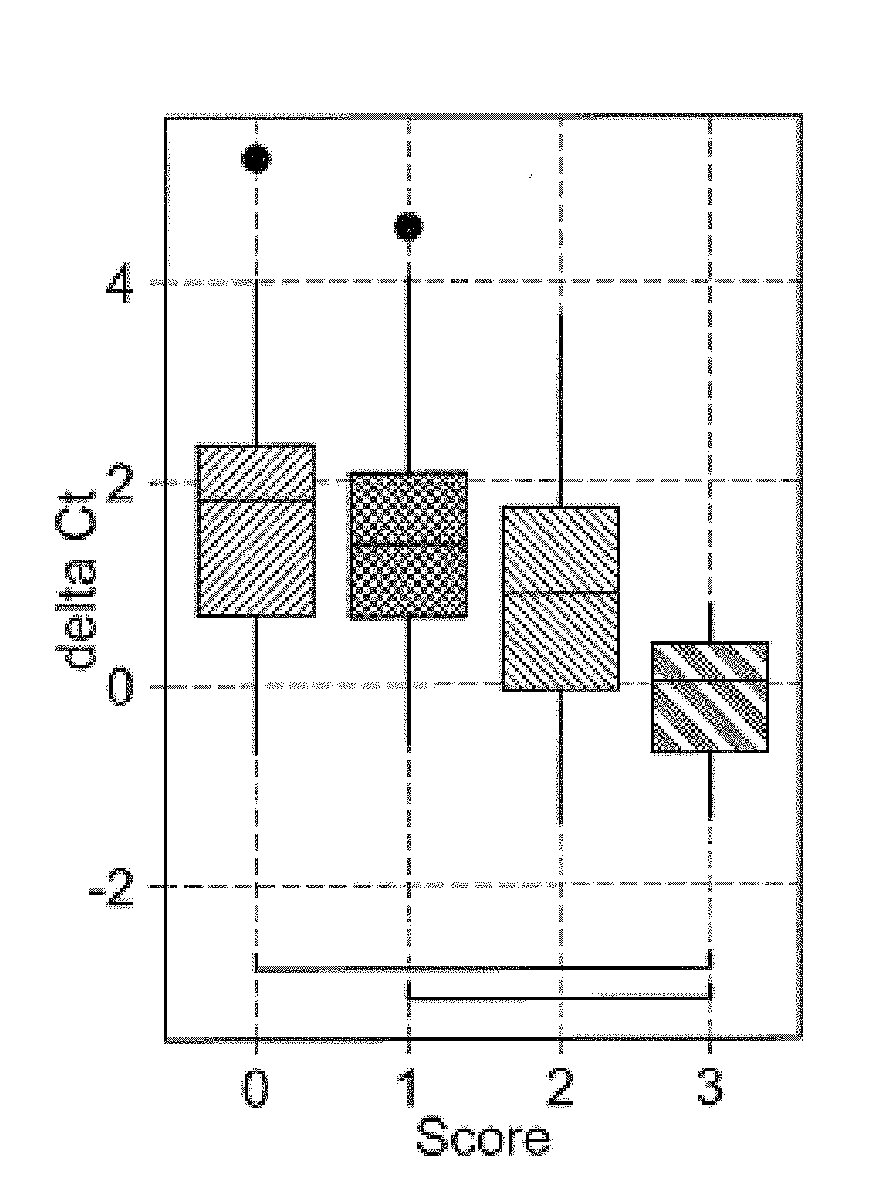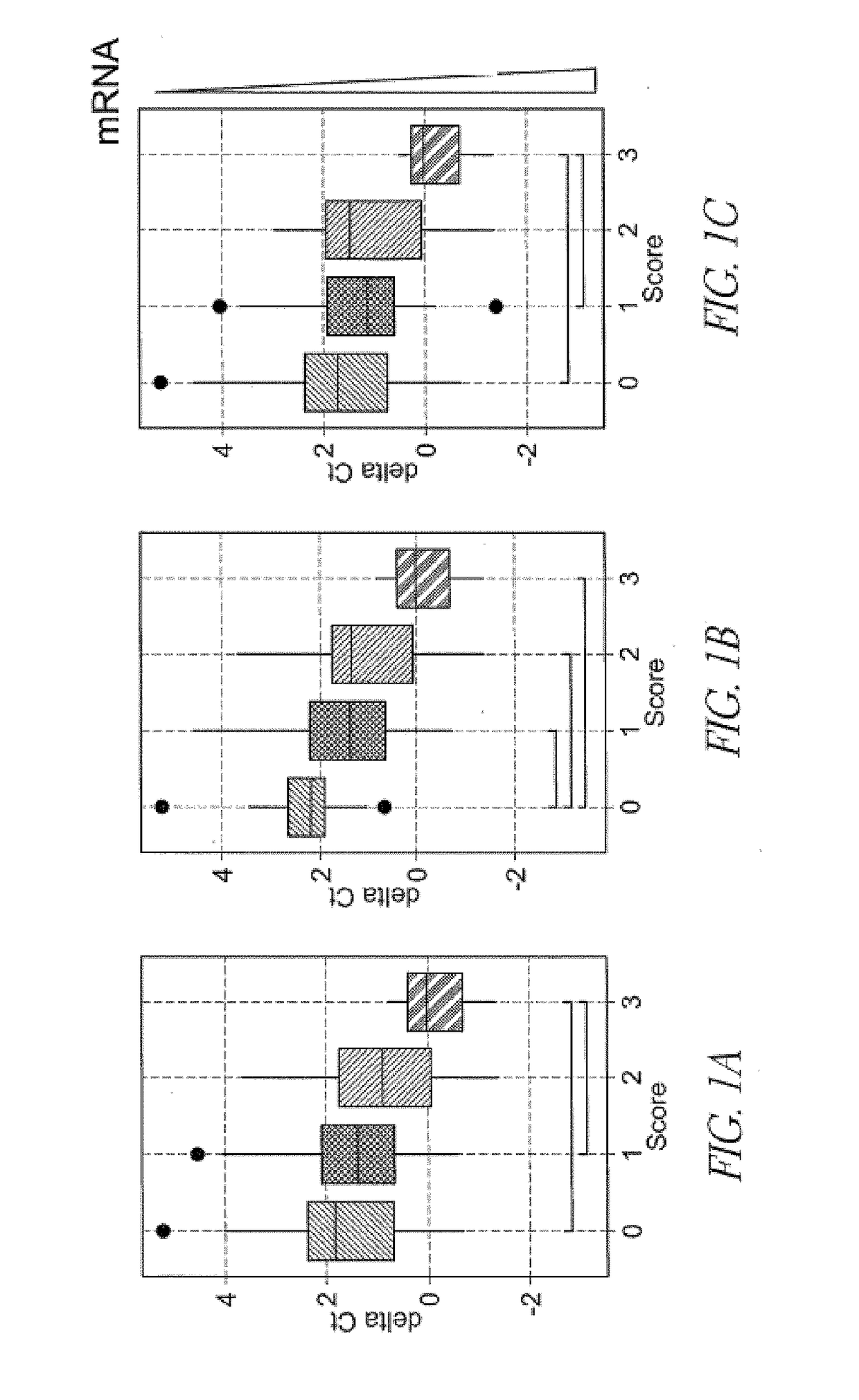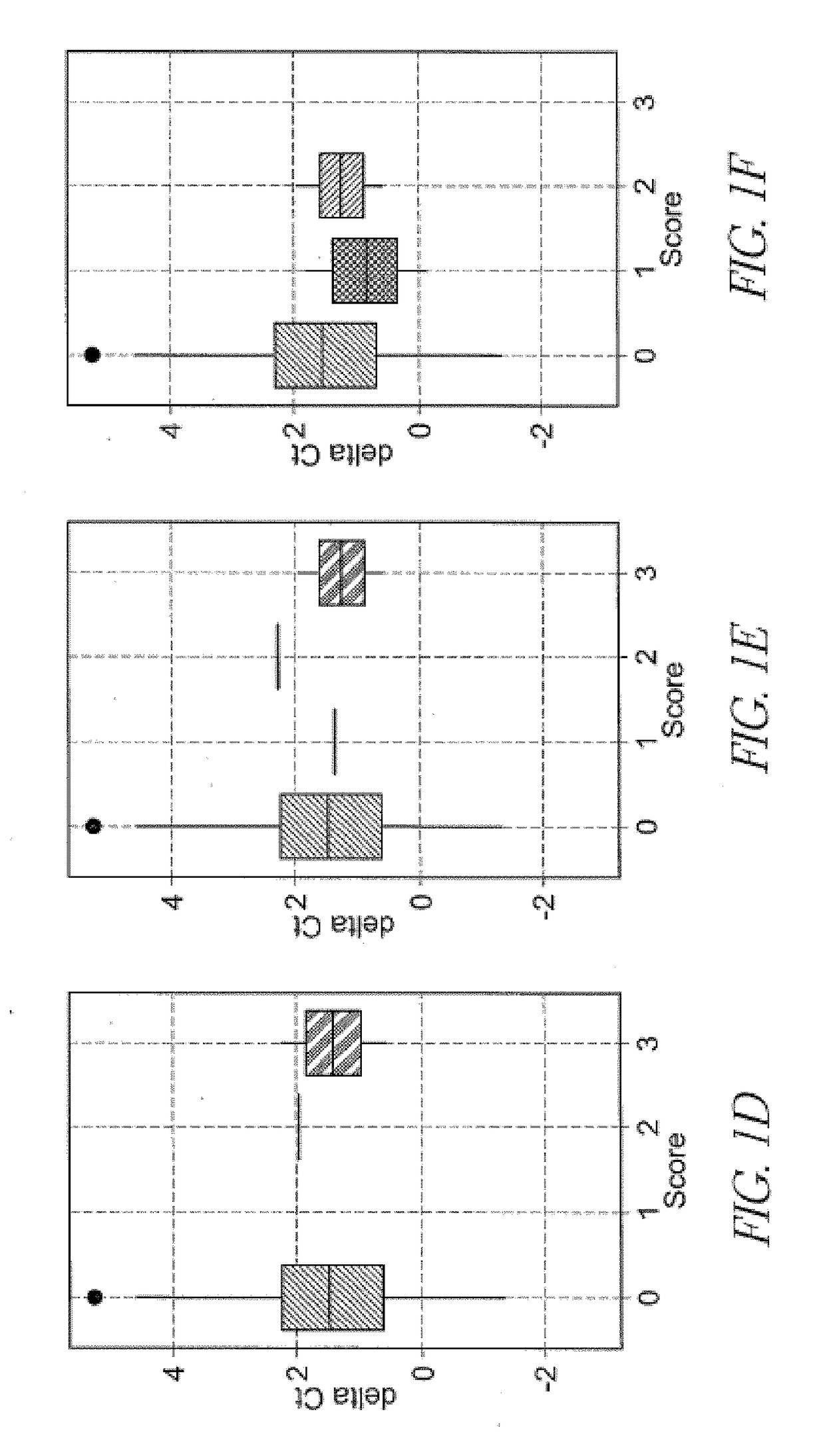Molecular methods for assessing post kidney transplant complications
a kidney transplant and molecular technology, applied in the field of monitoring post-transplant kidney conditions, can solve the problems of insufficient specificity and sensitiveness of conventional urinary biomarkers such as serum creatinine, urinary creatinine and urine protein, and the gap between patients and donors keeps growing
- Summary
- Abstract
- Description
- Claims
- Application Information
AI Technical Summary
Benefits of technology
Problems solved by technology
Method used
Image
Examples
examples
[0116]Specific embodiments will be described with reference to the following examples which should be regarded in an illustrative rather than a restrictive sense.
Patients and Samples
[0117]This study was reviewed and approved by the institutional review board at Sapporo City General Hospital. Kidney transplant patients (N=205) were recruited from those who received kidney transplantation at our institute. Up to 15 mL spot urine samples (N=437) were collected during the hospitalization and post-operation check up with an informed consent. The samples were stored at room temperature up to 3 hours and at −80° C. until analysis. Post-transplant complications were diagnosed based on eGFR, urinary protein and kidney biopsy with Banff criteria 2011 (Supplementary Table 1).
Urinary EMV mRNA Analysis
[0118]EMV mRNA assay was conducted as previously described. Frozen urine samples were thawed in a 37° C. water bath and centrifuged at 800×g for 15 min to remove large particles such as urinary cel...
PUM
| Property | Measurement | Unit |
|---|---|---|
| Time | aaaaa | aaaaa |
| Time | aaaaa | aaaaa |
| Time | aaaaa | aaaaa |
Abstract
Description
Claims
Application Information
 Login to View More
Login to View More - R&D
- Intellectual Property
- Life Sciences
- Materials
- Tech Scout
- Unparalleled Data Quality
- Higher Quality Content
- 60% Fewer Hallucinations
Browse by: Latest US Patents, China's latest patents, Technical Efficacy Thesaurus, Application Domain, Technology Topic, Popular Technical Reports.
© 2025 PatSnap. All rights reserved.Legal|Privacy policy|Modern Slavery Act Transparency Statement|Sitemap|About US| Contact US: help@patsnap.com



